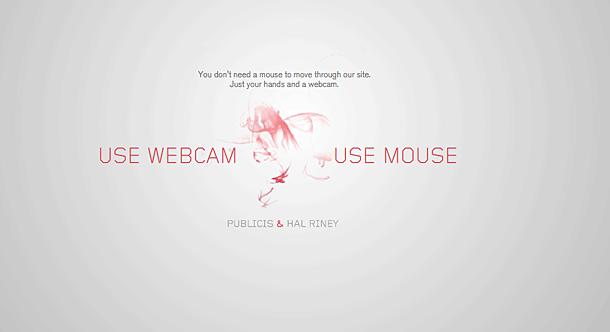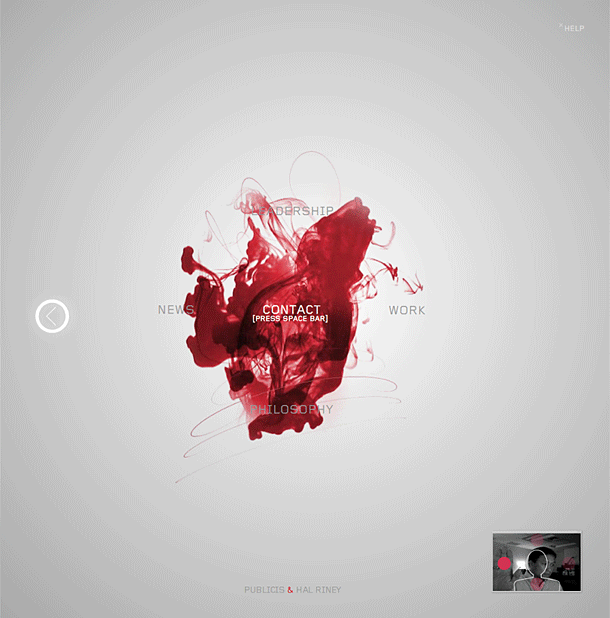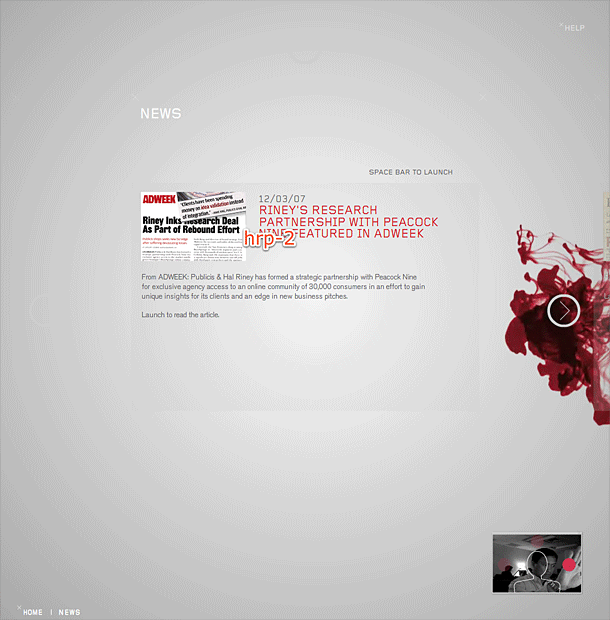The Publicis and Hal Riney site attempts to innovate navigation by replacing mouse input by detecting gestures the user makes against their webcam. Once the Flash file embeds your webcam video into the lower right corner of the page, a body outline is superimposed, and hot spots in the North-South-East-West quandrants are ghosted on the screen to show where you should hold or swipe your hand to navigate. Unfortunately the video ended up eating up resources on my machine to the point that the load times were painfully slow.
This site reminds me, in a way, of the Don't Click It site, which was a proof of concept for using mouse gestures rather than requiring the user click on links. It also reminds me of the Eye Toy game for the PS2, and the ToySight game for the Mac. There are several of these camera-based TV games available.
From personal experience, I can say that I found the EyeToy game interaction fun for several minutes while passing through a game store, but the experience with the ToySight game on the Mac is absolutely frustrating and pointless. This is the same feeling I get after playing with the Publicis and Hal Riney site. Using webcam gestures for the purpose of playing a game is quite different from swiping your arm around in order to navigate an information space. Additionally, besides the 4 directions provided for navigation, there is only one gesture used to select/click content on the page--the space bar. Don't Click It succeeds, at least, in that the gestures of a mouse are small. Having to pick up my arm to simply paginate seems a bit much.
Using the webcam gestures for interaction on their web site seems very misplaced. If the purpose is to demonstrate the idea, I'd think a separate demo for that specific purpose might be great. The visual design, on the other hand, is beautiful.


